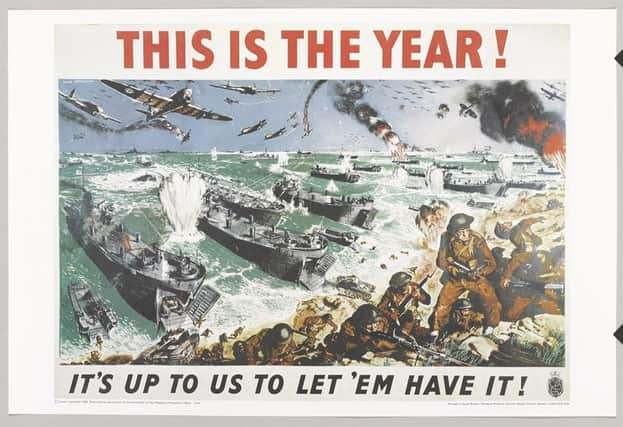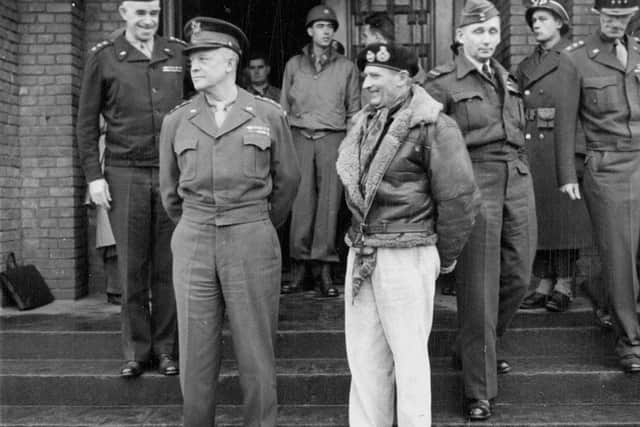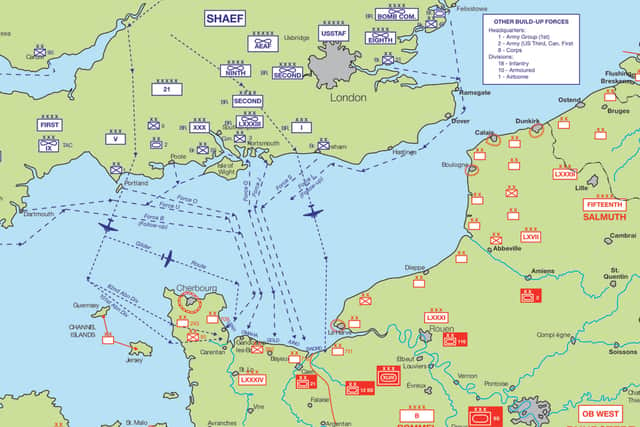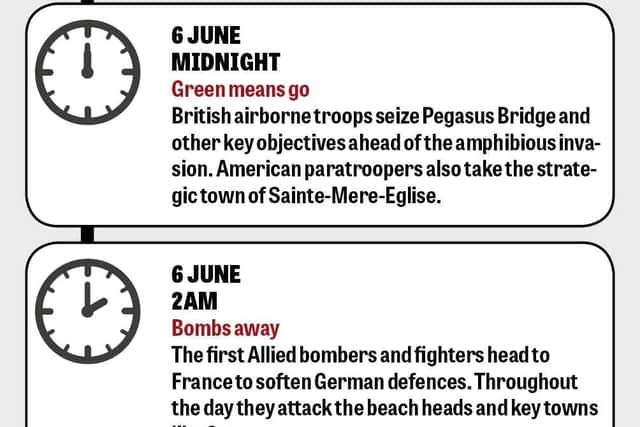D-Day: The fight for liberation


Written by The National Army Museum
D-Day, 6 June 1944, marked the start of the Allied invasion of Normandy, the greatest amphibious operation in history. Codenamed Overlord, this vast cross-Channel attack enabled the United Kingdom, the United States and their allies to land substantial forces on mainland Europe during the Second World War (1939-45).
‘This is the Year! It’s up to us to let ‘em have it!’, 1944, (Crown Copyright) National Army Museum: NAM. 1990-06-153-1
Advertisement
Hide AdAdvertisement
Hide Ad

Allied leaders agreed that establishing a second front in North West Europe and relieving the pressure on the Russians on the Eastern Front, was essential in order to defeat Nazi Germany during the Second World War.
They chose Normandy as the location for the D-Day landings, despite the Calais area offering a much shorter Channel crossing. Normandy had excellent landing beaches, was less fortified than Calais and was still within fighter aircraft range.
Planning
Extensive training took place in the UK in the months leading up to D-Day, ranging from divisional exercises to individual training to prepare soldiers for the assault. At the same time, a huge build-up of materiel took place, with the south of England beginning to resemble a huge military camp packed with vehicles, tanks, supplies and soldiers from many nations.


Thousands of air reconnaissance photographs of the German defences were taken. Special forces teams landed on the coast to gather information. Others worked with the French resistance to gather intelligence on German troop dispositions and carry out acts of sabotage against transport and communication networks.
Advertisement
Hide AdAdvertisement
Hide AdA meeting of Allied commanders, Maastricht, 7 December 1944 (Crown Copyright)National Army Museum: NAM: NAM. 1985-10-134-19
Beaches
A fleet of ships and landing craft crossed the channel. Heavy bombing, along with a massive naval bombardment, destroyed many of the German defences. Assault troops then landed on five beaches.Airborne forces were dropped behind the beaches and on their flanks to slow down German counter-attacks. Bridges, road crossings and coastal batteries were seized to help the amphibious forces advance inland.

